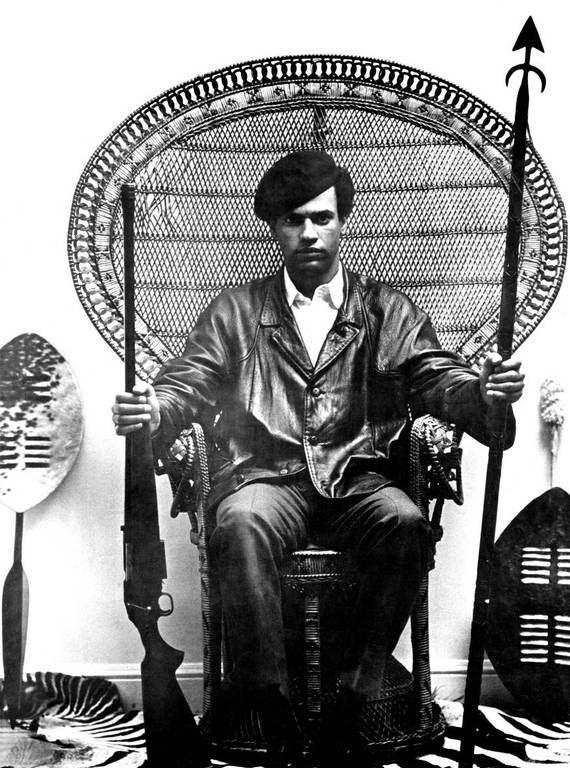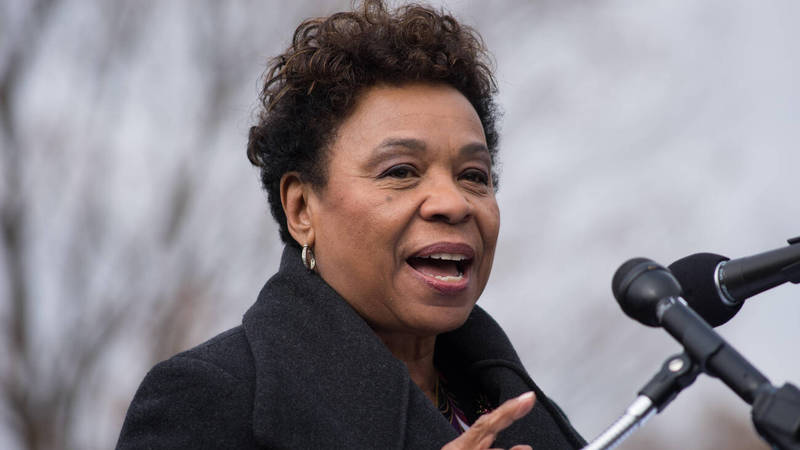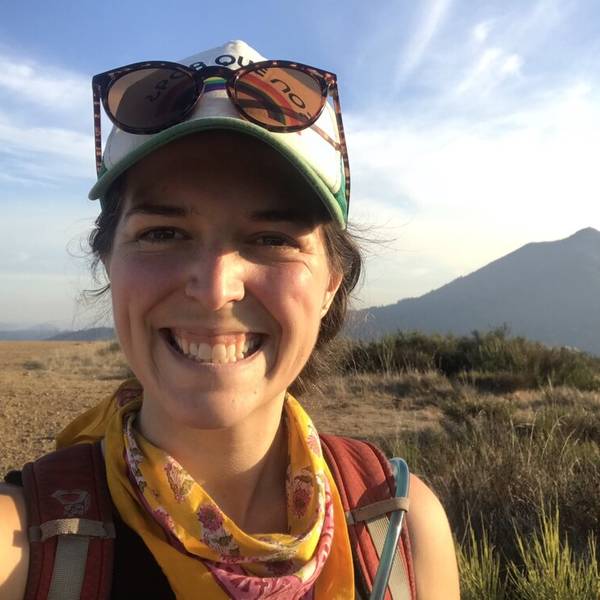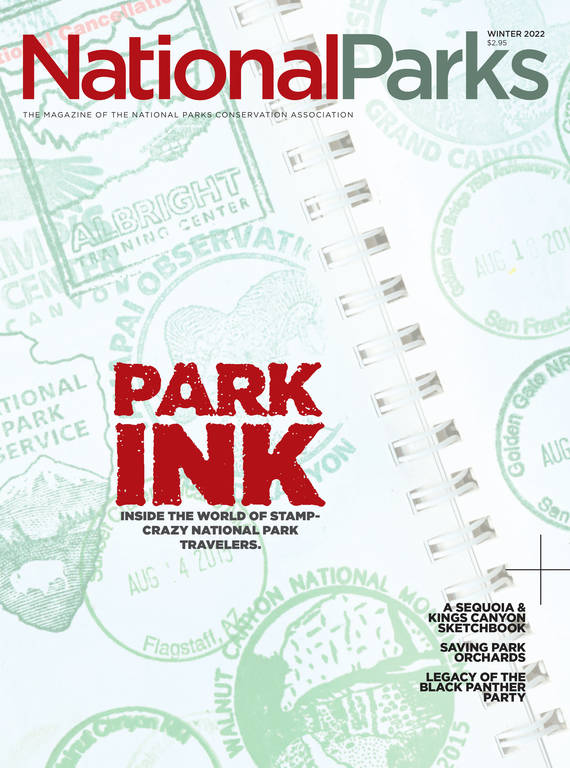Winter 2022
Revolution Revisited
The quest to create a national park site about the Black Panther Party.
DeFremery Park shimmers invitingly in the beaming sunlight of an October afternoon. While most of California has turned toasted shades of beige and brown after months without rain, the grass at this big city park in West Oakland is still green — and neighbors are making the most of it. A mom and her three kids roughhouse on the lawn, not far from where a few seniors sit chatting on folding chairs in a grove of stocky oak trees. Nearby, a group of men bow their heads in afternoon prayer.
Fredrika Newton sits on a bench in the shade of a redwood, taking in the scene. “There was a lot of history that happened here,” she says quietly. “This park was basically ground zero for the Black Panther Party in Oakland.” As a member of the original chapter of the group (then known as the Black Panther Party for Self Defense), which her late husband Huey P. Newton co-founded in Oakland in 1966, Newton spent long hours working in DeFremery Park alongside her compatriots. They were trying, she says, to meet the needs of the city’s Black and poor communities. Party members distributed thousands of bags of food and clothes here; it’s where they held after-school programs, registered voters, staged rallies demanding the release of party members who’d been imprisoned, and protested police violence.
Among the social and political forces that roiled the nation in the 1960s, few have been the subject of as intense debate as the Black Panther Party. How should the group be remembered? For its revolutionary politics or its community service? For its violent clashes with police, which claimed the lives of both party members and officers, or for mobilizing thousands of people to fight bigotry, oppression and institutional neglect? While historians, former party members and everyday Americans who lived through this era disagree over the Black Panthers’ legacy, few would deny the party’s significance. And yet, here in DeFremery Park and throughout Oakland, traces of the party’s history are hard to find: But for a few murals and the odd plaque or faded sign, there’s very little to suggest that this city was once at the center of one of the 20th century’s most consequential, and controversial, political movements.
Newton says it’s long past time for that to change. So alongside fellow former party members and community organizers, and with backing from NPCA and government officials from around the Bay Area, she’s working to establish a national park site in the East Bay that she hopes will shine a light on the Black Panthers’ complex history. DeFremery Park is just one of over a dozen places that could someday be managed by the National Park Service. Organizers’ wish list includes the childhood homes of influential party members, storefronts that once housed offices, and sites where Black Panthers served free breakfast to school children and ran free medical clinics. It also includes the college campus where the founders met and first articulated their platform — calling for full employment, education, housing and self-determination for Black Americans, among other demands — and even the North Oakland intersection where the Panthers staged their first act of community service in 1967. (Wearing berets and armed with guns, party members stepped in as crossing guards to see students from a nearby elementary school safely across a busy street where several of their classmates had been struck by cars and injured.)
For Newton, who married Huey P. Newton in 1984 and is now in her early 70s, the effort to create a park dedicated to the Black Panther Party is just one aspect of a 25-year drive to bolster public memory of the group, its roots in Oakland and its influence on the movement for the liberation of Black and oppressed people worldwide. As president of the Dr. Huey P. Newton Foundation, which she co-founded a few years after a drug dealer shot and killed her husband in 1989, Newton has published books and traveled around the world sharing the story of the movement her late husband helped build. The foundation also created a podcast and college curriculum and is in the process of digitizing and indexing the complete archives of the Black Panther Party’s weekly newspaper. At the foundation’s urging, the City of Oakland recently renamed three blocks in West Oakland in Huey Newton’s honor. And in October, the community celebrated the installation of a statue of him at the intersection of Mandela Parkway and Dr. Huey P. Newton Way, near the spot where he died.

Huey P. Newton in an iconic 1967 photo.
©SCIENCE HISTORY IMAGES/ALAMY STOCK PHOTONewton says everyone she’s spoken with about a Black Panther national park site has embraced the idea, but enthusiasm for memorializing Black Panther history is far from universal. In 2017, the Park Service awarded Ula Taylor, chair of African American studies at the University of California, Berkeley, a grant to fund a “Black Panther Party Research, Interpretation & Memory Project.” But the agency withdrew the grant weeks later, after the president of the Fraternal Order of Police wrote a letter to former President Donald Trump condemning the Park Service’s interest in the party, which he characterized as “an extremist separatist group that advocated the use of violence against our country” and a “violent and repugnant organization.”
The Black Panthers bucked what many Americans understand as “the acceptable model of nonviolent civil rights engagement,” says Alan Spears, senior director of cultural resources for NPCA. Rank-and-file party members openly carried guns in the name of self-defense and confronted what they saw as an abusive police presence. And a faction of the party’s leadership called for armed struggle against government oppression. “That’s a very uncomfortable history for some people to get next to,” says Spears. “There’s complication, violence and misunderstanding in this history. But that’s exactly the kind of complexity I think we want our national parks to embrace.”
Some of that popular misunderstanding of the group’s legacy was intentionally sown, historians say, and stems from a well-documented, frequently illegal and ultimately successful campaign by the federal government to destroy the party. Newton, who joined in the late 1960s, describes it as the “distortion, discredit, erasure and bastardization” of the Black Panthers’ political goals and contributions.
The party was portrayed as a racist, anti-white organization, but that’s inaccurate, says Curtis J. Austin, a historian at Arizona State University and author of the 2006 book “Up Against the Wall: Violence in the Making and Unmaking of the Black Panther Party.” “They made it clear that they were going to work with anybody who was willing to help solve problems. If that meant working with Latinx people, with Native Americans, with poor whites and upper-class whites, that’s what they’d do.
“The Panthers were not racist. They weren’t anti-American,” says Austin. “They were saying, ‘We just want to be included. We want better housing, good jobs.’ But because they insisted on not taking ‘no’ for an answer, they got painted as thugs, terrorists, hoodlums and people who hated whites.”
By late 1968, the FBI had added the Black Panther Party to its list of “black nationalist hate groups,” and Director J. Edgar Hoover instructed agents to “submit imaginative and hard-hitting counterintelligence measures aimed at crippling the BPP.” Around the same time, Hoover was widely quoted as saying that “the Black Panther Party, without question, represents the greatest threat to internal security of the country.” Over the next few years, agents carried out more than 200 operations against the Panthers. According to a 1976 Senate committee investigation of the FBI’s counterintelligence program, agents harassed and intimidated party members and would-be allies, infiltrated and bugged local chapters, fomented internal divisions, and planted lies in the press. (Austin estimates that 73% of newspaper articles about the Panthers from this era were penned or influenced by FBI agents.)

Rep. Barbara Lee, who was a volunteer with the Black Panther Party in Oakland as a young person, supports the creation of a Park Service site to recognize the history of the group.
©ANN LITTLE/ALAMY STOCK PHOTO“You didn’t know who was an informant,” says Newton. “We lived under constant surveillance and threat of attack. I didn’t assume that I’d live a long life.” Police officers shot Chicago party members Fred Hampton and Mark Clark in 1969; they were among at least 10 Black Panthers who’d eventually be killed in confrontations with law enforcement. (An attorney for the Black Panthers counted 28 such fatalities, while the website Officer Down Memorial Page attributes the deaths of at least 15 law enforcement officers to the Black Panthers. It’s difficult to count the victims of this conflict accurately, since law enforcement and the Black Panthers both had political motivations for attributing violence to the other side.) “The Panther-police conflict … played directly into the narrative that had been established: that the party was a provocative, dangerous organization,” acknowledged The New York Times in a 2016 story about its own coverage. “As The Times focused on … conflicts between the Panthers and the police, the party was organizing a slate of service programs for African-Americans in New York. But they went relatively unnoticed.”
The Senate Intelligence Committee’s 1976 report described the FBI’s counterintelligence techniques against groups such as the Black Panthers as “dangerous and unsavory” and found that the bureau’s activities “gave rise to the risk of death and often disregarded the personal rights and dignity of the victims.” Hobbled by such government interference, alienated from would-be supporters and weakened by internal divisions, the Black Panthers saw their influence and membership decline from their peak around 1970. The party sputtered out of existence in 1982.

National Parks
You can read this and other stories about history, nature, culture, art, conservation, travel, science and more in National Parks magazine. Your tax-deductible membership donation of $25 or more entitles…
See more ›This summer, Congresswoman Barbara Lee, who represents Oakland, formally requested that the Park Service launch a reconnaissance study of Panther history around the East Bay, an important step toward a possible national park designation. The study is set to take place in the first half of 2022. “Now is the time for the truth to be told about the Black Panther Party’s history. The party was ahead of its time. Its programs to serve the needs of this community are still a model for efforts to provide decent housing, food security, and so much more,” Lee, who is among the many elected leaders formerly affiliated with the Black Panther Party, said in an email. “And we hear the Black Panther Party’s demand for justice echo today when we say the words ‘Black Lives Matter.’”
Back at DeFremery Park, I ask Newton what she hopes future visitors will take away from the Park Service’s telling of the story. “I want people to know that this was a movement based on love,” Newton says, casting her eyes around the park where she served her neighbors over 50 years ago. “I hope visitors come away knowing that there were young people who put their lives on the line for freedom, justice and equality, out of love. Out of pure love for their community.”
About the author
-
 Julia Busiek Author
Julia Busiek AuthorJulia Busiek is a writer living in Oakland. She's worked in national parks in Washington, Hawaii, Colorado and California.



